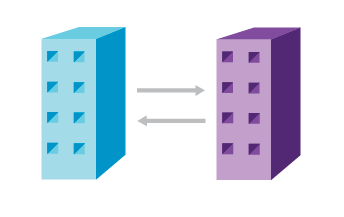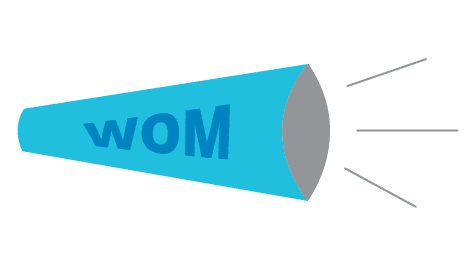Why should you know these 12 marketing acronyms?
They encompass any aspect of marketing. From the web design field to the business field.
The marketing landscape is filled with hundreds of terms, new and old. Some of those terms are becoming acronyms. The following 12 marketing acronyms are important to know since acronyms like SEO, KPI, and UX are going to show you’re on top of your marketing game.
1. API – Application Programming Interfaces
Application Programming Interfaces area a set of routine, protocols, and tools for building software applications. APIs allow an application to extract information from a service and use that information either on their own or in a data analyses. It’s basically a code that allows two software programs to communicate with each other and work correctly.
2. B2B – Business-to-Business

Business-to-Business is the relationship between businesses instead of between customers. Products, services, or information is exchanged between business like a tire business selling tires to a car manufacturer. Relationships are longer between businesses. Think LuccaAM’s relationship with our clients. That’s B2B.
3. B2C – Business-to-Consumer

Business-to-consumer is the relationship between a business and consumers. Here products or services are sold to consumers directly. In B2C, relationships are much shorter because the purchasing from a business might be a one-time thing. In this case, it’s Amazon selling that new phone case to you.
4. BR – Bounce Rate
A bounce rate indicates the number of visitors that reach your website but leave before clicking on any part of your website. It’s usually shown as a percentage. This number helps in determining what is and isn’t working. The lower the bounce rate means that your visitors like your CTA (explained next) and continue through to your site.
5. CTA – Call-to-Action
If you’re like me and lived in Chicago, no this CTA doesn’t mean Chicago Transit Authority. In marketing, a CTA or Call-to-Action is an image, text link, or button that encourages a person to visit your page and continue with that action. Whether it be to buy, call, or join the services that are being promoted. Marketers use this as a type of “bait” to attract prospective customers. A great call to action is invaluable.
Some examples:
Netflix

This call to action has the word free right in it! It even reassures you that you can cancel anytime. Simple and effective.

Instagram’s website automatically makes you think that you should be using it on mobile. It shows two cell phones with the app on display. It has four call-to-action buttons, two to log in and two to download the app. Instagram wants downloads so it’s going to provide the two downloads buttons in an equal size. Sure you can use the website version, but you’re not getting the same experience as you would through the app.
6. CTR – Click-through Rate
Click-through Rate on internet marketing is the metric that measures the number of clicks an ad receives. You find the CTR by taking the total clicks on that ad divided by the total impressions.


7. KPI – Key Performance Indicator
Key Performance Indicator is the type of performance measurement that companies use to evaluate an employee’s or an activity’s success. Marketers take into account KPIs to see how their marketing goals are progressing and how successful it is.
8. PPC – Pay-per-Click
Pay-per-Click is the amount of money spent on an ad to get clicks. Every time your ad is clicked, you pay a fee. The most popular PPC advertising system? Google Ads.
9. SEO – Search Engine Optimization
You might hear it all time because it’s been continuously tied to Google, Bing, and Yahoo searches. SEO is the use of techniques and strategies to attract customers to your website.
10. UX – User Experience Design
UX or User Experience Design is the process of enhancing user interaction by improving usability, accessibility, and pleasure with a website. The goal is to make user interaction as simple and efficient as possible. Although this acronym isn’t very common in marketing unless you’re also a web designer, it’s good to have in your repertoire.
11. UI – User Interface
UI stands for User Interface. The UI is everything a human interacts with. So the display screen, keyboard, mouse, help messages, and most of all, websites. UI is the process of visually guiding the user through a product’s interface via interactive elements across all platforms. So guiding a customer through your website in a simple and attractive manner. Just like UX, it’s not very often you use the acronym but knowing it will set you apart from other marketers.
12. WOM – Word-of-Mouth
![]()
Word-of-Mouth is the passing of information from one person to another person. In technical terms, WOM refers to oral communication but in today’s day and age, it can also refer to online communication. This is probably a marketer’s best and worst friend. Free promotion is great, but the type of promotion matters. A great Facebook review can help boost traffic and gain new leads. A bad review in all caps does the opposite and can tarnish your name.
These 12 marketing acronyms are just the tip of the iceberg. To learn the basics head to the SWOT analysis and the 4P’s of marketing posts. For other perspective posts, head here.
More Perspectives:
MYTH: Most Retail Searches Happen on Amazon
Common Issues with Customer Reviews
eCommerce Success with 5 Types of Conversions
FAQs
Why is it important to know marketing acronyms?
Knowing marketing acronyms like SEO, KPI, and CTR allows you to stay informed and communicate effectively with your team and clients. These acronyms are essential for understanding and tracking key marketing strategies, metrics, and performance indicators.
What does SEO stand for, and why is it important?
SEO stands for Search Engine Optimization, which refers to techniques used to improve a website’s visibility in search engine results. It’s important because higher rankings on search engines can drive more organic traffic to your website.
What is the difference between UX and UI in marketing?
UX, or User Experience Design, focuses on enhancing the overall experience users have with a product or website, making it more accessible and enjoyable. UI, or User Interface, deals with the visual elements and interactive components that guide users through a website or app. Both work together to improve user satisfaction and engagement.
How does PPC (Pay-per-Click) work?
PPC is an online advertising model where businesses pay a fee each time their ad is clicked. It’s a way to buy visits to your site rather than earning them organically. The most popular PPC platform is Google Ads, where advertisers bid on keywords to get their ads shown in search results.
